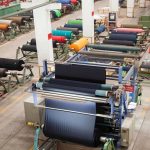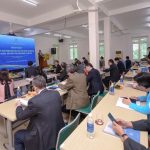K. EUFINGER, F. GOVAERT, M. VANNESTE,
Centexbel Gent, Zwijnaarde, Belgium;
B. PAQUET, C. REVERCEZ,
Centexbel Verviers, Herve (Chaineux), Belgium
In this paper we would like to discuss the challenges of direct fabrication of electronic components onto the textile substrate, e.g. preparing energy harvesting devices by coating on monofilament level or using base coatings. There is an increasing amount of research being done to realise this direct fabrication. This has several advantages over the traditional method where the components were stitched, laminated or fixed by some other means onto the textile. The fixation techniques usually show problems with interconnects, the components used were of the traditional kind, having a rather low flexibility and stretchability, resulting in a loss of the inherent properties of the textile substrate. By depositing the components directly onto the textile substrate its inherent properties can be preserved, since the deposited layers are inherently thin, being on the order of tens of nm, with a maximum of a few µm. The problem is that exactly this primary advantage faces one of the major challenges. The thin layers used in semiconductor technology are as such not compatible with the textile substrate which has an open structure and surface roughness in the order of the fibres or yarns it is made of, being the order of several tens of µm or even more.
Back to the Abstracts of the
4th Intl Conference “Smart Materials, Structures and Systems”





